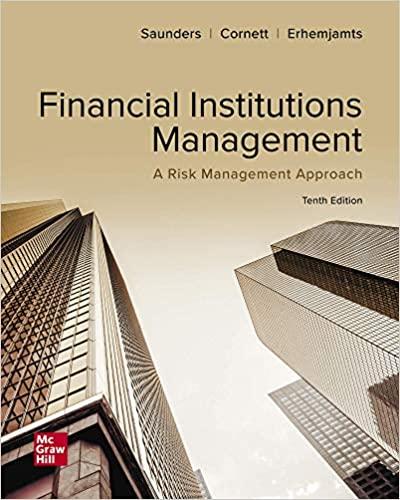Answered step by step
Verified Expert Solution
Question
1 Approved Answer
You need to assume many things in this question. The purpose of this question and the next is to demonstrate the effect of the tax
You need to assume many things in this question. The purpose of this question and the next is to demonstrate the effect of the tax exemption of interest incomes from municipal bonds on the borrowing costs of city governments.
Assume that contrary to reality currently the municipal bonds those issued and sold by city governments are taxable.
Assume that the interest rate on oneyear Treasury discount bond is percent a bit too high, if you ask me But this is a hypothetical world
Assume that the average income tax rate faced by bond holders is percent again the real world is much more complicated. But, whatever.
Assume the Treasury wants to borrow $ to finance some government expenditures. It wants to do this by issuing a oneyear discount bond. This bond is of course, riskfree.
Assume, again contrary to reality, that this borrowing by the Treasury will have no effect on the interest rate it will remain at percent
Assume that, coincidently, a city government also wants to borrow $ to fix some street potholes by issuing a oneyear discount bond. Assume this bond is also riskfree.
Finally assume that the market for this municipal bond is too small relative to the market for the Treasury bond. So the actions by this city government will have no effect on the interest rates on Treasury bonds.
Under these assumptions, to be able to borrow $ the Treasury has to issue a bond with a face value of
dollars and the city government has to issue a bond with a face value of
dollars.
The aftertax rate of return from the Treasury bond for the investors like you and me will be
percent and the aftertax rate of return from the municipal bond will be
percent.
After one year when the bonds mature, the Treasury will pay
dollars in interest to the lenders. The city government will pay
dollars in interest to the lenders.
One more assumption to make for this question. Now assume that just before issuance of the bonds by these two entities the Congress passes a law making municipal bonds taxfree.
Under these assumptions, to be able to borrow $ the Treasury has to issue a bond with a face value of
dollars and the city government has to issue a bond with a face value of
dollars.
The aftertax rate of return from the Treasury bond for the investors like you and me will be
percent and the aftertax rate of return from the municipal bond will be
percent.
After one year when the bonds mature, the Treasury will pay
dollars in interest to the lenders. The city government will pay
dollars in interest to the lenders.One more assumption to make for this question. Now assume that just before issuance of
the bonds by these two entities the Congress passes a law making municipal bonds taxfree.
Under these assumptions, to be able to borrow $ the Treasury has to issue a
bond with a face value of
dollars and the city government has to issue a
bond with a face value of
dollars.
The aftertax rate of return from the Treasury bond for the investors like you and me will be
percent and the aftertax rate of return from the municipal bond will be
percent.
After one year when the bonds mature, the Treasury will pay
interest to the lenders. The city government will pay
dollars in interest
to the lenders.

Step by Step Solution
There are 3 Steps involved in it
Step: 1

Get Instant Access to Expert-Tailored Solutions
See step-by-step solutions with expert insights and AI powered tools for academic success
Step: 2

Step: 3

Ace Your Homework with AI
Get the answers you need in no time with our AI-driven, step-by-step assistance
Get Started


